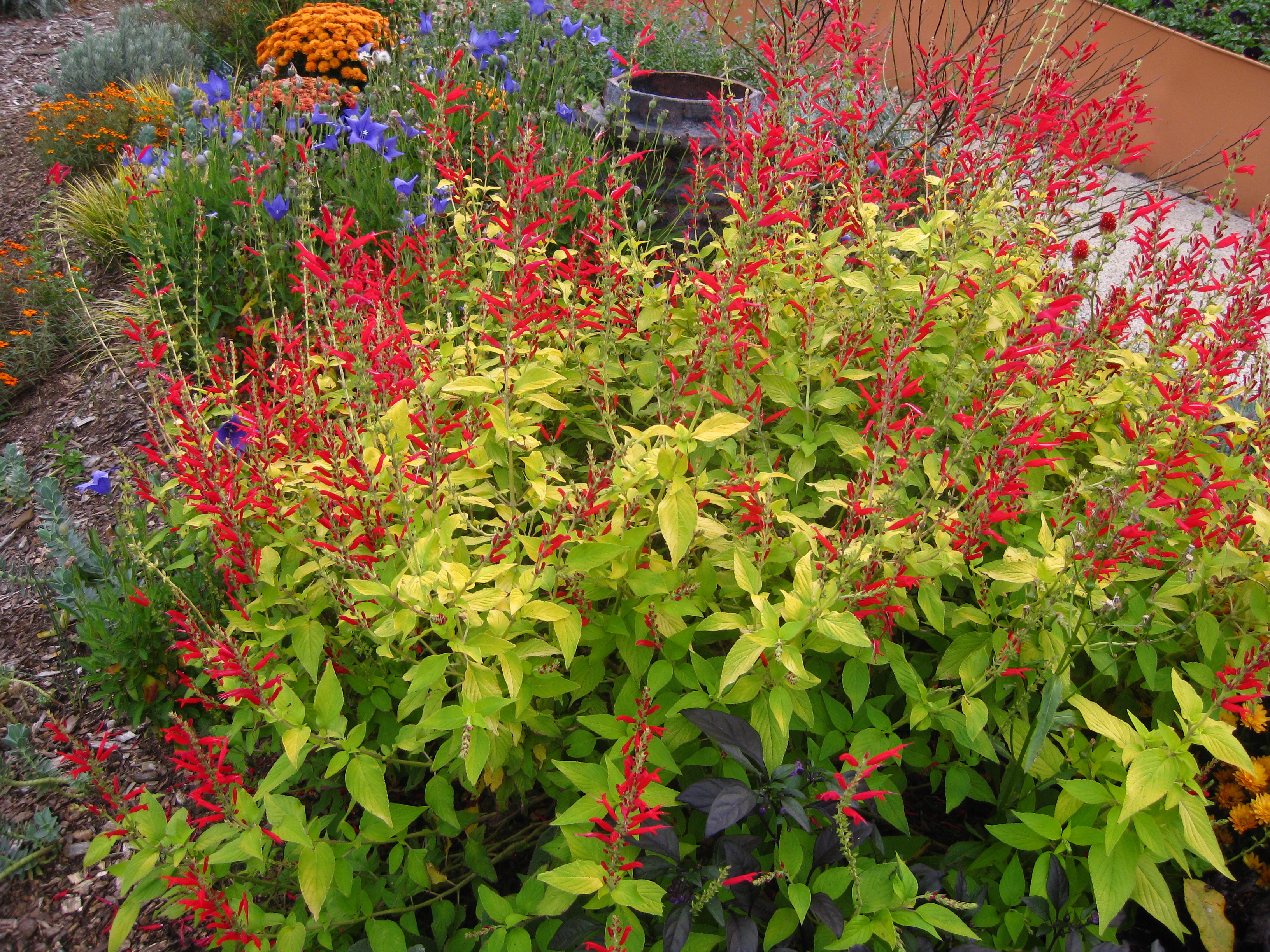Resource Library
Plant of the Week: Salvia elegans Pineapple Sage wk 41 2015
Salvia elegans Pineapple Sage wk 41 2015 --Golden Delicious Pineapple Sage is a stunning plant for display in the fall garden. (Image courtesy Gerald Klingaman)
Download High Resolution
Fall is a special season in the garden. The weather has cooled and colors become more vibrant as the soft season settles in. Several plants make their principle show in the fall but few are as showy and downright gaudy as Pineapple Sage (Salvia elegans).
Pineapple sage is one of about 700 species of salvias that have been described throughout much of the tropical and subtropical world. This species hails from the edges of the pine forests in southern Mexico and Guatemala, where it is found in the Sierra Madre between 6,000-7,000 ft. of elevation and grows as a semi-woody shrub.
In the garden, pineapple sage is usually grown as a frost tender perennial, though it is hardy outdoors in zones 8-10. In zone 8 it freezes to the ground, but in milder areas the woody base of the plant will persist through the winter. It usually grows 3-4 feet tall and wide with a rounded form. The opposite, pubescent, pineapple-scented leaves are 2-3 inches long. Though green leafed forms are available, golden leafed selections, such as the 2001 introduction ‘Golden Delicious,’ are typically offered in the trade.
In late September and through October, 6- to 8-inch-long terminal spikes of bright red, two-lipped flowers are held above the foliage. The 6-12 flowers are as long as 2 inches in length, and attractive to butterflies and hummingbirds. If taken indoors, plants can remain in bloom through the remainder of the year. Like garden mums, pineapple sage is a classic short day plant.
Pineapple sage was first described in the botanical literature in 1804 but was not introduced into cultivation until about 1870, when it was rediscovered and given a new name, S. rutilans. Because of its short day nature and because the center of the garden literary world was the northeastern states, it never gained much traction except as a winter flowering herb for use in conservatories. Bailey didn’t mention it in his early-1900s Cyclopedia, and by mid century, Everett only mentioned it for use as a conservatory plant for wintertime blooming. It was used in mild parts of the country – Texas, California and Florida – but seems to have caught on big time as a tender annual with the new plant craze of the 1990s.
This aromatic herb has edible leaves and can be used to garnish foods, added as a flavoring in baking and to make teas. It has a history of being used in its native range in Mexico as a remedy for anxiety and to lower blood pressure.
Pineapple sage is best in full sun in a rich, uniformly moist soil where it is effective as a background plant in the mixed border or for use in large patio containers. It is frost sensitive and plants should not be set outdoors until the soil has warmed in the spring. Pinching to encourage branching will produce more compact plants. The plant does not need staking in the garden. Like many members of the mint family, whiteflies and mealybugs will sometimes attack it, especially if grown indoors over winter.
For more information about horticulture or to see other Plant of the Week columns, visit Extension's Web site, www.uaex.uada.edu, or contact your county extension agent. The Cooperative Extension Service is part of the U of A Division of Agriculture.
Pursuant to 7 CFR § 15.3, the University of Arkansas System Division of Agriculture offers all its Extension and Research programs and services (including employment) without regard to race, color, sex, national origin, religion, age, disability, marital or veteran status, genetic information, sexual preference, pregnancy or any other legally protected status, and is an equal opportunity institution.
